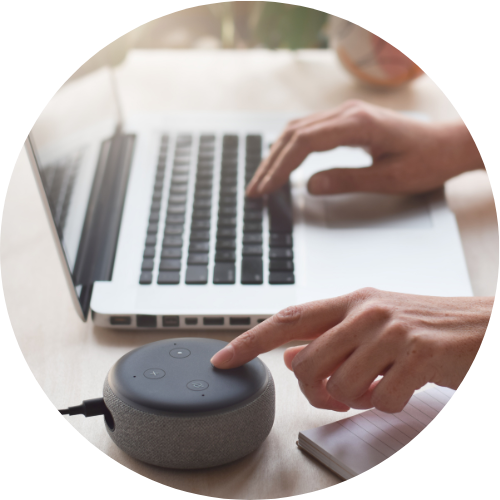If you’ve ever seen Disney’s 1999 classic, Smart House, you know that while having a smart house is cool and convenient, it can lead to some messy situations. Sure, there might not be a robot woman wreaking havoc on you and your family as you use home technology. But, the reality is a lot creepier.
Our homes are becoming more “smart” every day. With the convenience of adjusting your thermostat from the road, there lies some risk. What if a hacker gets into your thermostat and adjusts the A/C to 60 degrees, making your electric bill skyrocket? What if someone could remotely view your cameras and tell when you were not home? Unfortunately, that is the world we are living in.
Now we’re not saying that having a connected smart home is a bad or dangerous thing, but there are several ways you can protect yourself, your family and your home. Let’s start by seeing where home cyber threats are coming in.
What’s That Noise On Our Baby Camera?
What do you do when there’s a stranger’s voice talking to you in your baby’s room? One couple found out that they were being watched through their baby monitor.
An in-home camera that was being used to monitor a baby was hacked and was used to scare the parents half to death; the attacker was able to tell the parents he was in the baby’s room and to turn off the lights (when the parents turned them on). While there was no intruder actually in the home, you can imagine the parents fear to hear someone’s voice coming through the camera.
The Singe-Worthy Hair Straightener
Bluetooth-enabled hair straighteners may be few and far between, but the heat they generate can be dangerous. There’s a case where a hacker overrode the built-in safety features in the iron, and heated it to a dangerous temperature. Obviously, this is dangerous for someone using it on their hair. Plus, it can be a fire hazard if left on for too long.
When Smart Thermostats Are Too Smart
The computing power that’s behind these smart devices is amazing. For example, the Nest thermostat is actually a small Linux computer with a reasonably capable CPU. If a Linux computer can get hacked, then that leaves your thermostat up for grabs, too.
How Do You Defend Against These Cyber Criminals?
Smart devices are somewhat prone to being hacked, but many of us are not willing to give up the convenience they add to our lives. Here are a few ways you can outsmart the cyber threats knocking at your door:
- Make sure all your passwords are secure. Use a password manager, like LastPass, to manage your passwords. Don’t forget to secure your Wi-Fi password as well.
- Change your default passwords on new equipment. Your Wi-Fi, for example, may have come with a generic password. Make sure you change it using today’s password standards.
- Use two-factor authentication. Even if your super-secure password gets leaked on the web, two-factor authentication will keep you informed of login attempts that you didn’t make.
- Keep your devices updated. It is critical to update the firmware and security patches on your devices. These updates fix known security flaws found on your smart devices.
- Setup a separate Wi-Fi network just for smart devices. Smart devices, like your smart assistant or home security cameras, should not be on the same Wi-Fi network as your computers. Eliminate the tie between your smart device and your computer, which holds your confidential information, so cyber threats can’t access your smart thermostat and invade to your computer or phone.
- Review your privacy settings. Review the security settings on your smartphone-based apps to ensure you’re not giving away too much of your private information.
- Invest in a traffic monitor and log. This may be over the top for some, but a traffic monitor and log can be the key to checking on a suspicious network event efficiently and effectively.
- Avoid buying something just because it’s cheap. It’s not worth the amount of time and energy that goes into securing and patching a cheap knockoff solution. Buy a product that has been researched, tested, and penetration-tested with years of support and firmware upgrades. This doesn’t mean that a thoroughly vetted product can’t be hacked, but it can be easier to keep secure.
What’s Next?
If you’re in the market for a new smart device, check out Mozilla’s “Privacy Not Included” online tool. They have a list of smart devices that have been thoroughly reviewed, tested and recommended for purchase.
If you’re worried about what’s lurking on your home network, schedule a free scan of your home.



